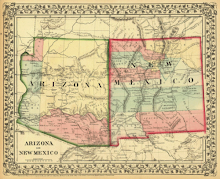By Steve Hammons
So far, the coronavirus seems to be creating more severe illness and death among people age 60 and older, according to reports. This obviously impacts the post-World War II “baby boom” Americans (and those in other countries) who were born between 1944 and 1964, and are now around age 55-75.
Hence, the term for coronavirus, “boomer remover,” that has been circulating out there, along with the virus itself. There reportedly are approximately 76 million baby boomers in America.
Boomers are also the group that generally faced the Vietnam War (1955-1975). They fought in the war, and against it – both often with courage and honor in the face of conflicting, changing and very difficult circumstances.
But the greatest risks from coronavirus reportedly are to the World War II generation, born between 1901 and 1927. Those women and men experienced the Great Depression (1929-1933) and are now in their late 80s and 90s. They are our parents, grandparents and great-grandparents.
Oh, and by the way, in the World War II era of the mid-1940s, they helped save Planet Earth and humanity from the dire threat posed by the perverse and murderous Nazi movement then centered in 1930s and ‘40s Germany. U.S. military deaths during WWII totaled more than 405,000.
URGENT TEAMWORK
According to news reports, recently-released forecasts by the U.S. Centers for Disease Control (CDC) estimate that, over the next year, the coronavirus could potentially infect between 160 million and 214 million people, and kill between 200,000 to 1.7 million people in the U.S.
Younger adults might think they will not be significantly medically affected by the coronavirus and the COVID-19 disease, based on current research data. However, the highly-contagious disease could be fatal for their parents and grandparents.
And recent reports from France note that half of the patients in intensive care from COVID-19 are under age 60. Preliminary medical data from Italy are also noting a significant number of cases in younger adults, somewhat in contrast to initial data from China indicating a significant risk for older adults only.
Generations X, Y and Z might be younger and, in general, healthier than Boomers and the WWII generation, but Gen X Americans are not exactly young anymore, and some Gen Y folks are pushing age 40:
- Gen X: Approximately 82 million in U.S., born 1965-1979, currently ages 40-54.
- Gen Y: Approximately 72 million in U.S., born 1980-1994, currently ages 25-39.
- Gen Z: Approximately 74 million in U.S., born 1995-2015, currently ages 4-24.
Additionally, people of all ages should be aware and concerned about the possibility of the coronavirus mutating into a form that could impact a wider scope of people. Viruses naturally mutate, and this is a common trait of viruses.
According to some research, the coronavirus might have already mutated into two strains. Mutation could affect how easily a contagious virus can be transmitted, who it affects and how deadly it is.
Mutation can go either way – toward a less harmful or more dangerous virus.
Because there currently is no proven and approved medication, and no vaccine for coronavirus and the COVID-19 disease, a mutation in the wrong direction could be very problematic for a broader demographic of Americans.
So, there are a number of good reasons for people of all ages, backgrounds and circumstances to follow recommendations from public health officials. Today, Grandma and Grandpa are at greatest risk. Tomorrow, it could be you.
The incubation period for the coronavirus is reportedly from 2 to 14 days, though typically around 5 to 5.2 days, according to U.S. public health officials. That indicates that the virus is currently incubating in many Americans who will start experiencing symptoms in the next 10 days or so, and beyond.
That is when our hospitals and front-line health care providers could be pushed to the limit, or past the breaking point. We might run out of hospital beds, ventilators, protective gear for providers – and health care providers themselves as they become ill with COVID-19.
If you are age 25 with pneumonia from coronavirus, and there are no medical resources to help you, what would have been a treatable condition could become fatal.
REINFORCEMENTS NEEDED
According to the CDC, their forecasts indicate that hospitalizations from coronavirus could range from 2.4 million to 21 million people. In the U.S. currently, there are approximately 925,000 beds, less than 100,000 of the beds are for critical patients.
The sooner we “flatten the curve” through robust “social distancing” and delay the inevitable spread of the COVID-19 disease, the better off we all will be.
It seems possible or likely that military resources will soon be deployed further to assist – reserve components (National Guard, Reserves) and active-duty. National Guard troops have already been called out in several states. Military field hospitals, large and small, can be erected quickly and staffed with highly-trained and experienced military physicians, nurses and other health care specialists.
Our military not only has a well-developed and mobile medical system, but also has expertise in logistics, moving things and people from one place to another. Military personnel could also be made available to assist in other non-medical public health efforts of various kinds.
Other potential resources include volunteers who could undergo a rapid-training program to assist in multiple ways. College students and high school students, at lower risk for serious disease, could be trained-up quickly for a number of urgent situations. Other civilian volunteers, many of them suddenly unemployed, could also be promptly trained to help.
The pandemic has cost many Americans paychecks temporarily, and it is certain to result in a loss of jobs and income for a large number of our citizens. In addition to this important factor, many people want to help in any way they can. They want to pitch in to get through this situation.
A trained volunteer force could transition into a paid paraprofessional force on a temporary basis. We will probably need these reinforcements soon.
It’s time to think outside-the-box, enlist all Americans to pull together, and rapidly implement intelligent, responsible and effective leadership throughout our society – from the top down, from the grassroots up, and from the center out.
(Related articles "Navy Research Project on Intuition," "Human perception key in hard power, soft power, smart power" and “Storytelling affects human biology, beliefs, behavior” are posted on the CultureReady blog, Defense Language and National Security Education Office, Office of the Undersecretary of Defense for Personnel and Readiness, U.S. Department of Defense.)

























































































































































































